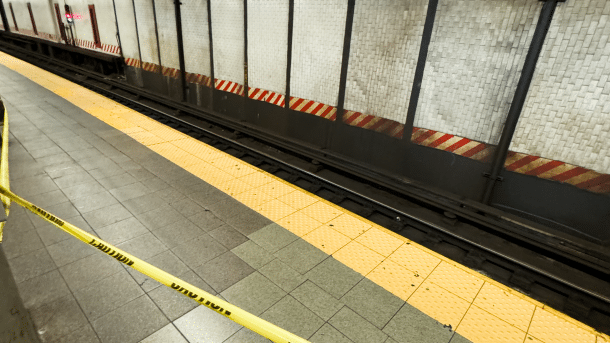Missing link: How New York is failing to digitize public transport tickets
With the OMNY NFC system, New York's public transport operator MTA wanted to make everything better. It turned out differently – also because of data protection

Subway platform in New York City.
(Image: heise online / Ben Schwan)
New York City has a fantastic public transportation system by American standards. There is a subway with almost 400 km of track, three commuter railroads that connect the city and surrounding areas, a short subway system for commuters from New Jersey called PATH, numerous buses plus streetcar systems in the surrounding areas. However, the system is only somewhat comprehensible to city dwellers – and even they are surprised every day.
Although the MTA operates the subway, two of the three commuter rail lines and many buses, there is not even a standardized fare or ticket system for them, let alone a real transport network. If you want to get from JFK Airport to Manhattan in comfort, for example, you first use the AirTrain operated by PATH (which at least supports MetroCards, the old MTA ticket system) and then change to the Long Island Rail Road (LIRR), which in turn uses its own tickets (including its own app and conductor).
The MTA also knows that such a system eats up resources in the long term and is difficult to explain to tourists and newcomers to the city. It therefore began digitizing its ticketing system in 2019. The solution to all the problems was to be called OMNY, an abbreviation for "One Metro New York". The first step was to replace the old ticket system with MetroCards, which still have a magnetic strip and once replaced the world-famous "tokens" of the New York Subway. Five years after the launch of the OMNY system, disillusionment is setting in. On the one hand, it seems as if some goals have been achieved. But the truth is that everything is even more confused than before.
(Image: OMNY / MTA)
Magnetic strips still in use, plus additional app
A reader for MetroCard magnetic strips is still installed at every subway, AirTrain and PATH station and on every bus. OMNY is just an additional system that hardly anyone understands. In addition, both the LIRR and Metro-North, the MTA's commuter railroads, still do not accept OMNY. This is because they have their own app, called TrainTime, which the MTA claims is very popular with users.
So there are currently three ways to ride the subway or AirTrain in New York:
1. you buy a MetroCard from a machine as usual (they are available at every station and at kiosks) and then charge it, riding until it is empty. A standard fare of 2.90 US dollars applies in the Subway, which is charged when you enter the system, no matter how far you travel.
2. you use an NFC credit card, Google Pay, Apple Pay or Samsung Pay (plus alternative systems) with a credit card on file to check in - something we know from London, for example. The fee is then debited directly from the card. When changing to the bus, make sure you always use the same payment method.
3. buy a physical OMNY card with NFC instead of the MetroCard. This can also be topped up, even online. Advantage: It is more robust due to the lack of a magnetic strip and is not susceptible to unwanted erasure by means of a magnetic field. The problem: OMNY tickets are available at comparatively few stations or kiosks, as the MTA cannot keep up with setting up the machines.
However, if you want to travel with LIRR or Metro-North, you need the TrainTime app mentioned above. This has a completely separate account system including support for Apple Pay and Google Pay, uses a QR code instead of NFC (which the conductor then checks by eye) and is also used to understand the complicated fare system with distance and peak and off-peak prices. Result: Every day, it often happens that newcomers to the city or tourists try to travel with MetroCard LIRR or Metro-North.
To make the confusion complete, the PATH short subway has meanwhile started to roll out its own payment system called TAPP, which in the longer term will only work with contactless credit cards. MetroCard and a proprietary smart card system called SmartLink are set to go the way of the dodo on the rapid transit system to Newark and Hoboken.